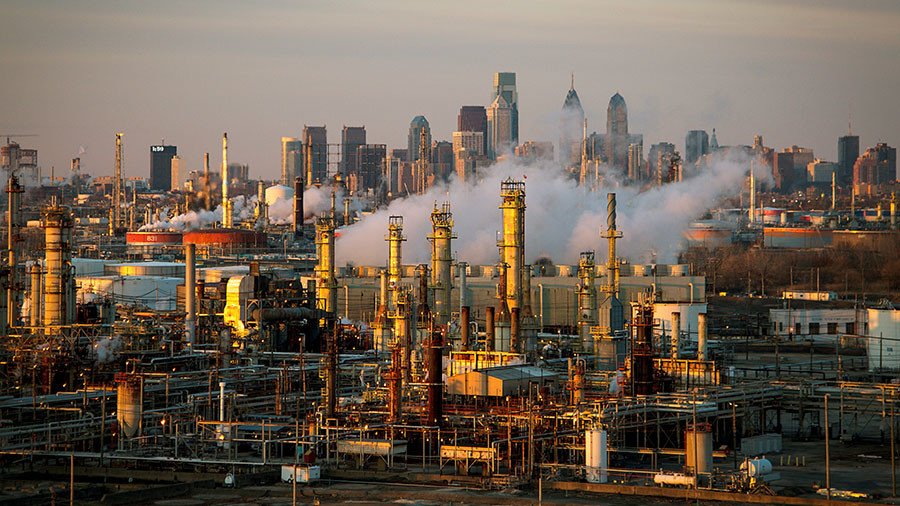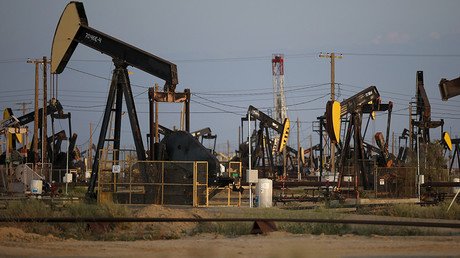EIA’s shocking US oil production predictions

Between 2010 and 2015, annual oil production in the US grew by four million barrels per day (bpd). It dipped in 2016, rising again by 1.2 million bpd between January and December 2017, to levels not seen since the early 1970s.
The surge in production is a result of growth in tight oil (more commonly known as shale oil). Many, including myself, never imagined that oil production could grow enough to threaten the US oil production peak from 1970. But that looks inevitable at this point.
This production increase raises the question: Just how much will US tight oil production increase before it peaks and begins to decline? Another million bpd? Three million bpd?
The #AEO2018 High Oil and Gas Resource and Technology case projects #tightoil production to reach 14.6 million barrels per day by 2050, or 77% of total U.S. production. https://t.co/BF2WgZNm8Opic.twitter.com/ZtevsiHHwh
— EIA (@EIAgov) March 1, 2018
The Energy Information Administration’s latest Annual Energy Outlook (with projections to 2050) attempts to answer this question, modeling several scenarios for future oil production.
The Reference case projection assumes that known technologies continue to improve along recent trend lines. The economic and demographic trends that were used reflect the current views of leading forecasters.
In the High Oil and Gas Resource and Technology case, lower costs and a higher resource availability than in the Reference case are assumed. In the Low Oil and Gas Resource and Technology case, the assumption is of lower resources and higher costs.
US oil production projections
Every case assumes at least a few more years of tight oil supply growth. The Reference case shows shale/tight oil production growth of two to three million bpd over the next three years, before leveling off and remaining at approximately that level until 2050.
The Low Oil Resource case projects tight oil growth of another million barrels per day through about 2022, and then a steady production decline until 2050.
The High Oil Resource case projects sharply higher tight oil growth until about 2025, and then slower growth until 2050. Total production growth, in this case, was almost nine million barrels per day — implying a near doubling of tight oil production between now and 2050.
Supply Risks
But there’s one item that barely gets a mention in the EIA’s Annual Energy Outlook. It is something I [Robert Rapier from OilPrice.com - Ed.]witnessed firsthand when I was recently in the Permian Basin. Oil production can expand only as quickly as infrastructure can keep up. And it is struggling to keep up.
It’s not just crude oil pipelines that are an issue. Along with oil comes associated natural gas. In some cases, producers have no outlet for this gas, so they flare it. But there are various legal limits to flaring. This week, I heard about a producer who is having to reduce production because they are bumping up against their permitted limits for flaring.
In addition to potential infrastructure constraints, higher oil prices also lead to greater demand for oilfield services providers. That leads to higher costs for the oil producers and higher profits for drilling and fracking services providers.
At present, one of the bottlenecks in the Permian Basin is with the fracking service providers, and that is leading to a growing backlog of drilled-but-uncompleted wells (DUCs). This is helping to constrain production in the Permian Basin but was not a risk identified in the EIA’s production projections.
Conclusions
The latest Annual Energy Outlook from the EIA models the future potential of tight oil production under several scenarios. Some scenarios project tight oil production growth for another three to four years, but these scenarios apparently don’t consider supply risks posed by insufficient infrastructure, oilfield services or manpower. These factors could slow tight oil growth over the next few years and could potentially shift the timing of peak tight oil.
This article was originally published on Oilprice.com















